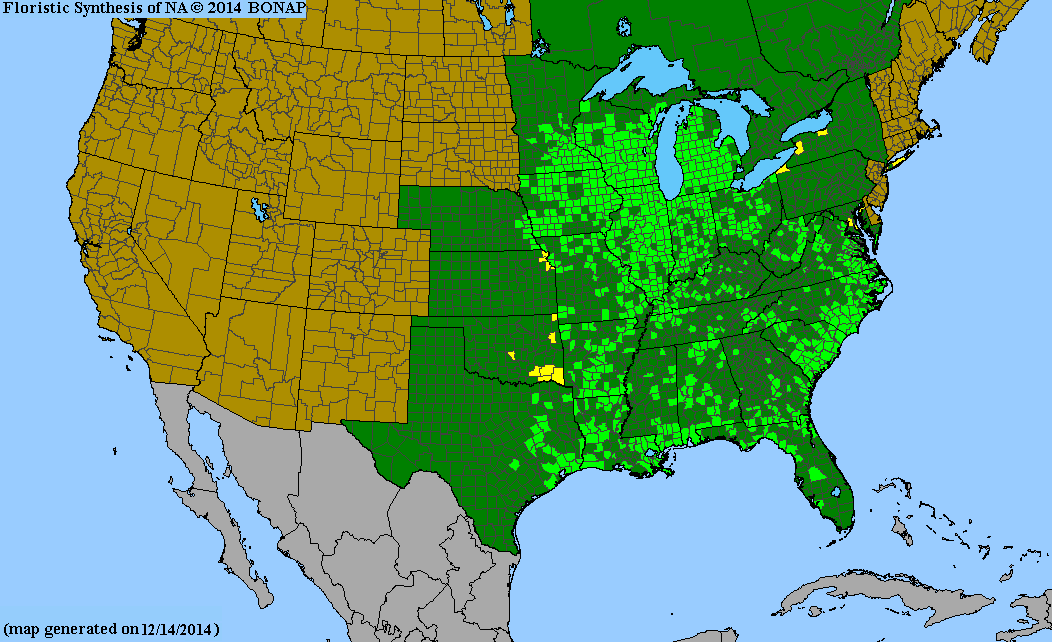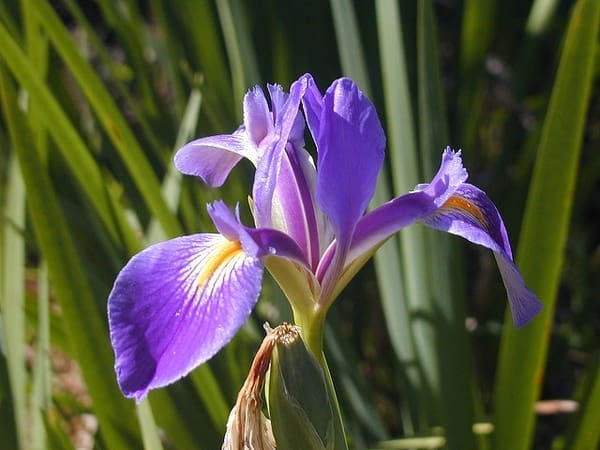Iridaceae
southern blue flag iris
Iris virginica
Synonyms
Iris versicolor f. virginica
Iris versicolor var. virginica
Limniris virginica
Xiphion virginicum
Plant Type
Herbaceous Wildflower
Life Cycle
Perennial
Typical Size
1-2.5 ft. tall
1-3 ft. wide
Tolerant of
Deer, Occasional Flooding
Inolerant of
Dry Soil
Propagation
By division
Plant Propagation Notes
Division by rhizomes.
Plant Planting Notes
It does best grown in moist to very wet, humusy to sandy soil and in boggy acidic areas in full sun. Growing even in 6 inches of fresh standing water, it should not be permitted to dry out during the growing season.
Plants/Diseases
No serious problems.
Wildlife Benefits
Nectar/pollen source for pollinating insects
Leaves
The linear basal leaves are gray-green blades with mature leaves exhibiting ribs.
Flowers
Large irregular flowers with 6 petals, approximately 1-3 inches across, borne singly per stem. Overall flowers are blue to purple/lavender, but the “falls” have white marks and yellow crests.
Fruit
Capsule with D-shaped seeds.
Bark
The green stems can be rather weak, often falling over after flowering.
Toxicity
Low toxicity when eaten.

USDA Hardiness Zones
5, 6, 7, 8, 9
Light Exposure
Full Sun
Soil Moisture
Moist, Aquatic Plant
Soil Drainage
Well-drained
Soil pH
Acidic (less than 6.0)
Native in South Carolina?
Yes
Plant Native Habitat
Wetlands, margins of lakes and streams
Global Conservation Status (NatureServe)
Secure (G5)
Federal Conservation Status (USFWS)
Not Listed
Distribution Notes
Common in the SC Coastal Plain, rare in the Piedmont, and absent from the Mountains

